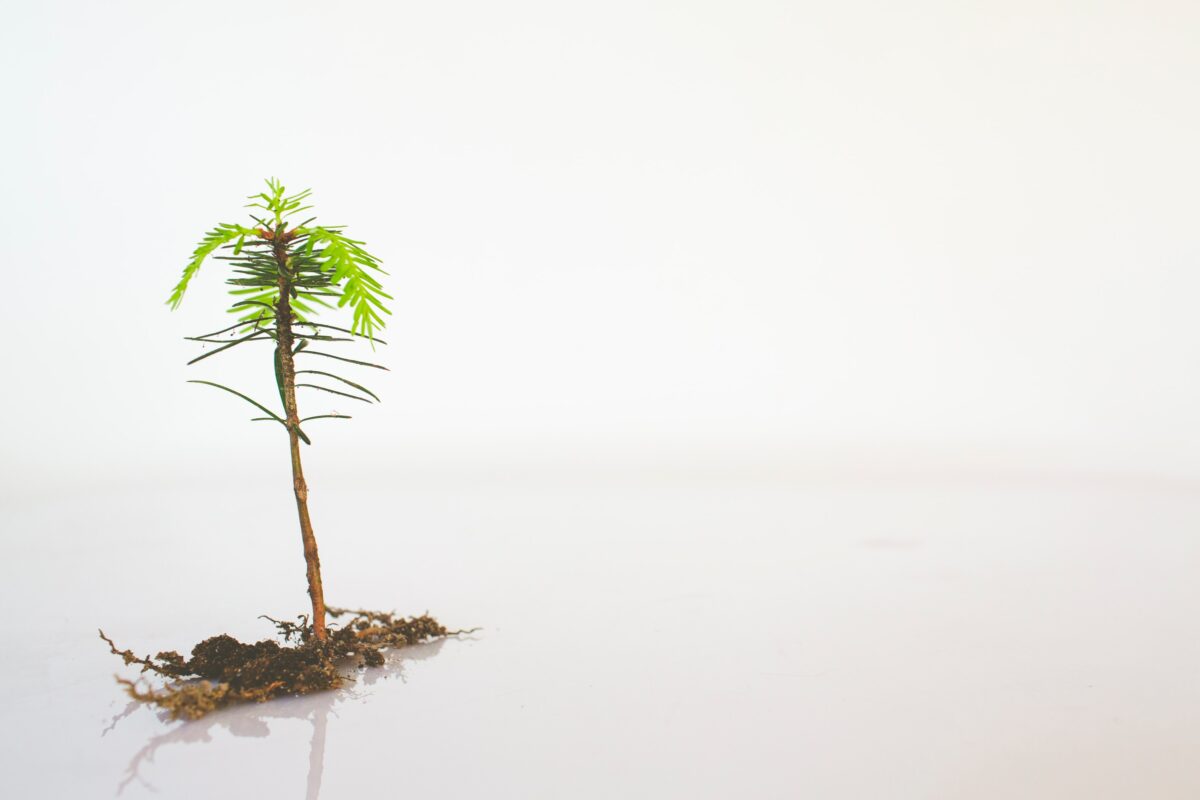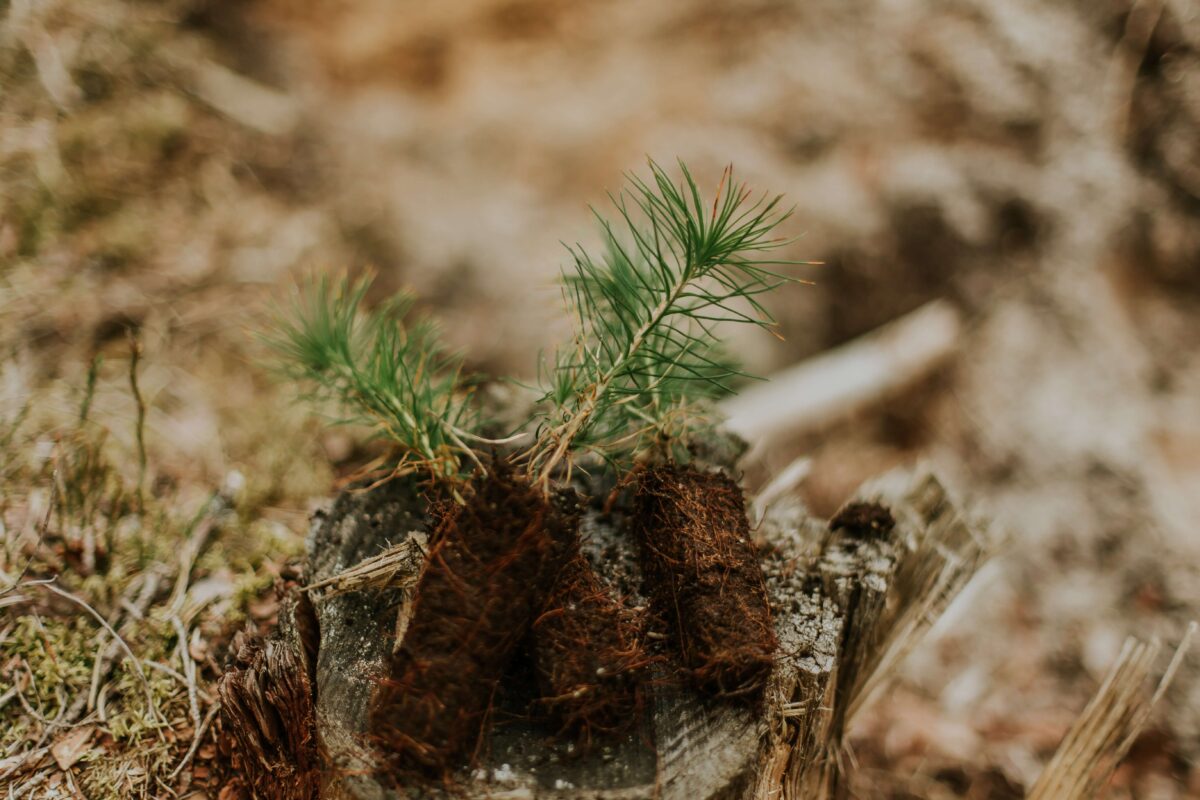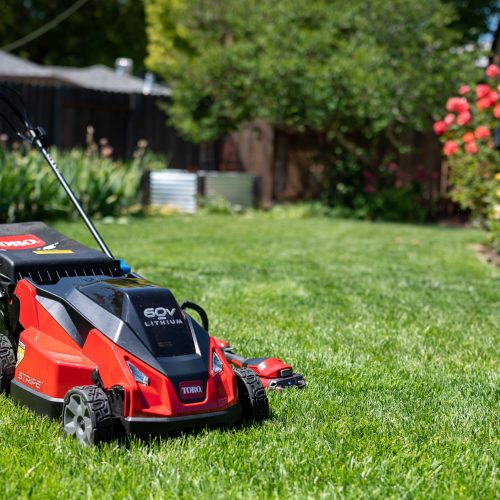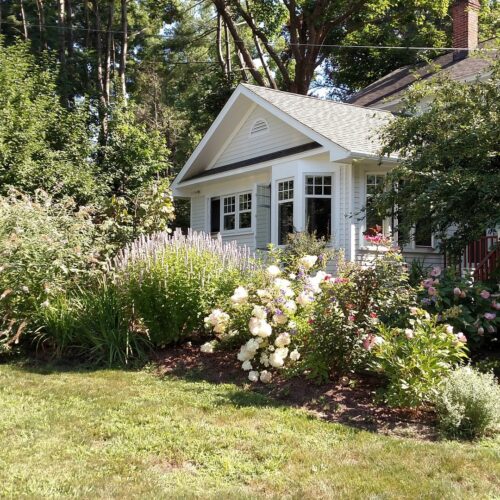This simple guide will help you be successful in planting bare-root trees in your yard. Planting trees with bare, exposed roots can be tricky business, especially if they are young saplings. As you prepare for spring gardening, browse through these tips to ensure all of your plants survive this coming season!

Table of Contents
When to Plant
Bare root trees should be planted during the dormant season. This can either be in the fall after the leaves have dropped or in early spring before the trees have sprouted new leaves. Either way, waiting to plant until the weather is cooler or just before a rain will give your young tree a better chance of establishing itself in a new environment.
Interested in planting young trees in your yard? Learn how to propagate beautiful dogwood trees from clippings!
Transporting Your Tree
Bare root trees lose large amounts of moisture through their roots and leaves if they are not protected from heat and wind. Without special care during transportation, bare-root trees can quickly become dehydrated and suffer potentially fatal damage.
Side Note: At room temperature, your trees can lose up to 3 percent of their weight in moisture per hour.
If you have to transport your tree from a nursery to your home, you should immediately place your sapling roots into a container with some water, or gently wrap the tree roots in dampened paper towels for the ride home. When you get home, continue to soak the roots in water for about 3 to 6 hours.
Another way to help reduce water loss during transport is to dip your sapling’s roots in hydro-gel. Many nurseries have adopted this practice, but some people are concerned about the long-term health effects related to hydro-gels.
When planting a young tree in a new environment, it is normal for it to undergo some “transplant shock.” This means your plant may experience slowed growth and reduced vitality as it adjusts to its new environment.
Planting Your Bare-Root Tree

Because time is of the essence when planting your young tree, it is best to dig and turn the soil around your hole ahead of time. Remove any grass within a 4-foot circular area, and dig a hole wider and deeper than seems necessary so that the roots can grow without crowding.
After placing your young tree where you want it, refill the hole with your native soil. Don’t add soil amendments such as peat, bark, fertilizer, potting soil or chemicals to the soil surrounding the sapling. These nutrient-rich products may kill your young tree. As you shovel in the remaining soil, it should be firm but not tightly packed. If you are planting a grafted tree, keep the graft union (noticeable “bump” in the lower trunk) two to three inches above the ground.
Give the tree plenty of water. After the water has soaked in, spread a two-inch layer of mulch around the tree base, without letting it touch the trunk. The soil and mulch around the trees should be kept moist but not soggy. During dry weather, generously water the tree every 7 days during the first year.
If you live in an area with wildlife, such as rabbits or deer, you may consider protecting your tree with a small chicken wire fence. With proper planting and enough TLC, your tree will soon establish itself and develop new buds and stems.
I hope this information is helpful. Happy planting!
- About the Author
- Latest Posts
I strive to paint vivid landscapes with my words, bringing the magic of far-off lands and enchanting aromas to life for my readers. Combine passion for exploration and the art of gastronomy in an unending ode to the senses. When I’m not traversing the globe, I find solace in the earth beneath my fingertips, tending to my garden and working on projects around my verdant oasis. MK Library serves as a beacon, guiding fellow travelers and homebodies alike to embrace sustainability, nurturing both our planet and our souls with purpose. Full Bio.






